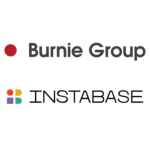Organizations constantly seek innovative solutions to optimize how documents and unstructured data are ingested, triaged, and executed. Enter intelligent document processing (IDP), a cutting-edge technology that leverages artificial intelligence (AI), machine learning (ML), natural language processing (NLP), and intelligent character recognition (ICR) to extract, validate, and process information from unstructured or semi-structured data sources, including invoices, contracts, and forms. IDP enhances efficiency, streamlines operations, minimizes errors, and reduces dependency on manual intervention for document-centric processes across industries. Even in light of broader digital transformation and movements to purely digital channels, IDP remains a significant efficiency driver, particularly in highly regulated businesses that still rely on paper documents and structured or semi-structured forms.
4 Steps to an intelligent document processing solution
Intelligent document processing comprises four steps that enable data extraction from documents. These include:
- Document ingestion: Acquiring or aggregating documents from various sources, such as scanners, emails, or file uploads, and converting them into digital formats.
- Document classification: Categorizing and labelling documents into predefined categories based on their content, format, or other characteristics.
- Data extraction: Converting documents into a machine-readable format with optical character recognition. Once the data is converted, NLP is applied to extract data and context from unstructured text.
- Data validation & verification: Validating extracted data with a human-in-the-loop process or cross-referencing the data with databases or predefined rules to identify errors and inconsistencies or initiate other triage-like processes.
Once the data is extracted by IDP, it can seamlessly integrate with existing systems or databases to ensure smooth data transfer and compatibility with established processes.
IDP market outlook
The IDP market has witnessed remarkable growth, with a valuation of $1 billion in 2021. According to projections, the market is expected to reach an impressive $6.3 billion by 2027, boasting a compound annual growth rate (CAGR) of 35.4%. This rapid expansion highlights the immense potential and demand for IDP solutions in various industries. In comparison, the projected CAGR for RPA stands at 30%, indicating IDP’s rising prominence and relevance within the intelligent automation landscape.
Key trends in intelligent document processing
1. An ever-changing competitive landscape
IDP presents a wealth of options and possibilities for organizations seeking to streamline their document-based workflows and harness the power of automation. However, the proliferation of IDP vendors and frequent mergers and acquisitions in the industry have led to an ever-changing ecosystem characterized by many choices and terminologies. Navigating this landscape can be daunting for organizations, often leaving them confused and uncertain when selecting the right intelligent automation technology for their specific needs.
2. Expansion of capabilities beyond traditional document processing
Many IDP vendors are converging and expanding their capabilities beyond traditional document processing. This convergence manifests in the fusion of various functions and the integration of complementary intelligent automation functionalities. IDP can seamlessly combine with other intelligent automation tools, such as RPA and process orchestration, to offer comprehensive solutions that address multifaceted business challenges.
3. Increased use of industry-specific solutions
As businesses grapple with complex and specialized document requirements, traditional technologies like optical character recognition (OCR) no longer meet their needs. Organizations are turning to specialized IDP providers with deep vertical domain knowledge and data expertise to find industry-specific IDP solutions that ensure accurate data extraction and enhanced operational efficiency.
4. More platforms with low-code/no-code capabilities
Empowering users lies at the heart of modern IDP platforms. Incorporating low-code/no-code (LCNC) capabilities into an intelligent document processing platform enables users to easily design and maintain their data extraction workflows, reducing reliance on IT departments and accelerating the implementation of IDP solutions.
Maximizing efficiency through integration with other tools
While IDP solutions offer significant benefits for extracting data from documents, they are often just one component of a larger automation ecosystem. Organizations often need to integrate IDP with other technologies, such as robotic process automation (RPA) and workflow orchestration tools, to unlock efficiency and fully realize the potential benefits of automation. Furthermore, the accuracy of data extraction is highly dependent on the quality of the source data. It often requires validation or cross-references to ensure the correct data is actioned. An integrated approach across tools enables end-to-end automation and process optimization. Some tools that complement IDP are:
- Workflow automation: Tools such as business process management (BPM) can complement IDP by orchestrating and automating entire processes, including non-document tasks.
- Robotic process automation: Organizations often rely on legacy systems that operate in isolation, lacking the capability to connect with external systems. RPA can receive data extracted by IDP and trigger actions like database updates or entering data through the user interface of these systems, ensuring a seamless data flow and enhancing accuracy.
- Data analytics & business intelligence (BI): Integration with data repositories and BI tools like Tableau or Power BI enables organizations to analyze and visualize data extracted from documents, facilitating data-driven decision-making.
- Customer relationship management (CRM) systems: Integrating IDP with CRM systems like Salesforce or HubSpot ensures that customer-related documents are processed and relevant data is updated in CRM records.
- Integration platform as a service (iPaaS): IDP tools can integrate with multiple core business applications like enterprise resource planning (ERP) through iPaaS solutions. This enables automatic data extraction and entry into business applications. iPaaS workflows can trigger actions based on extracted data, like initiating approvals or applying business rules.
Key considerations when choosing an IDP solution
Several key considerations are crucial when evaluating IDP tools to ensure optimal performance and maximize value for your organization. These considerations delve into the intricacies of your specific document processing needs, technological infrastructure, budgetary constraints, and long-term strategic objectives. Some of these considerations are:
- Capabilities: Assess the ability of the IDP solution to handle context-based AI extraction, read handwriting, extract data from tables, and employ templates effectively. Make sure the tools work on your volume of unstructured data.
- Accuracy: Evaluate the tool’s accuracy in extracting handwritten data, processing images, extracting text, handling non-language fields, including radio buttons and checkboxes, and classifying documents.
- Training time: Consider the time required to train documents and AI models, create necessary templates, process data, and ensure consistency across documents. While some IDP tools work more effectively on consistent templates, others thrive with variety.
- Risk management and operational controls: Look for robust controls, flagging mechanisms for low-quality or low-confidence data, and seamless integration with existing tools and platforms.
- Integration with existing tools and platforms: IDP is often a component of a larger automation initiative. Therefore, it must integrate with an organization’s existing tools. Some common integration options are through API, database connections, and file systems.
- Cost efficiency and commercial models: Weigh the advanced capabilities of the tool against its cost, deployment models (cloud vs. on-premises), and potential discounts from vendors. Common commercial models include pay-as-you-go (per page), bulk purchases, or flat-rate licensing. Depending on tooling, these can often be purchased within your existing automation suite, through their various digital exchanges, or hyper-scaler marketplaces, such as Google, AWS, or Azure.
By considering these key factors, organizations can navigate the complex landscape of IDP solutions and make an informed decision that aligns with organizational goals. The right IDP solution should streamline operations and enable scalability and drive innovation in your document processing workflows.
As a leading provider of intelligent automation solutions, Burnie Group is at the forefront of the IDP revolution, empowering businesses to transform their document management processes and achieve unprecedented efficiency and accuracy. Find out how Burnie Group can support your organization with automation solutions. Reach out to us.
By: Najeeb Saour, Practice Leader, Charles Xie, Senior Engagement Manager & Reny Jacob Reji, Engagement Manager
About the authors
Read more our insights on automation
Find out how intelligent document process can transform your organization.
CONTACT US






